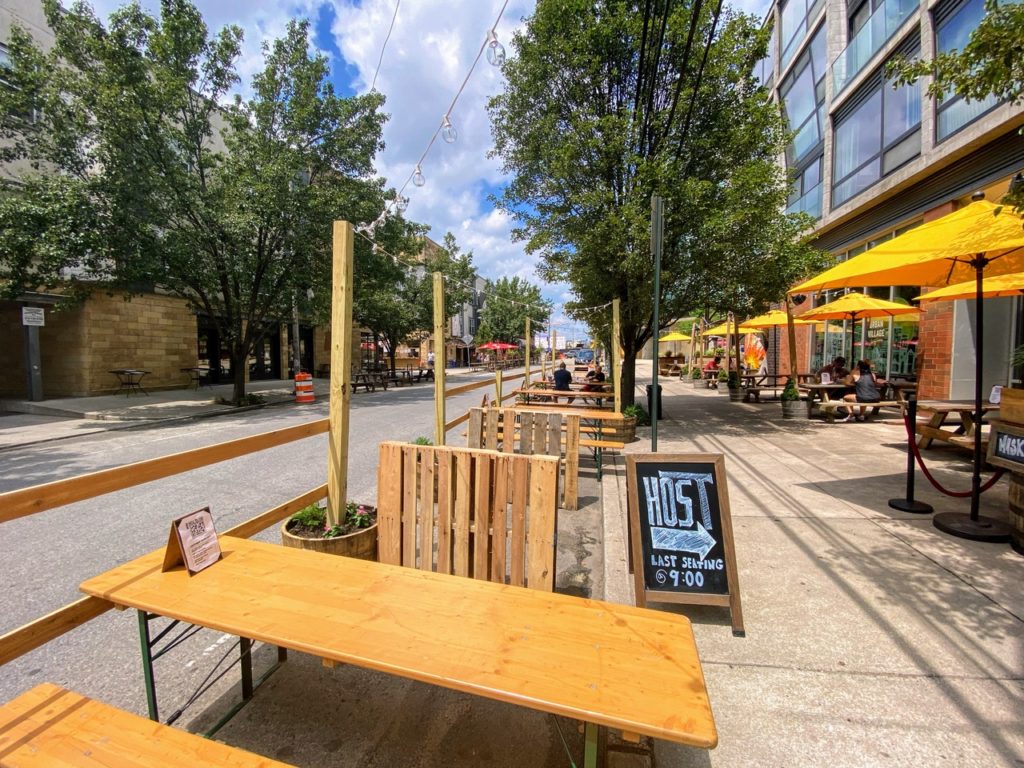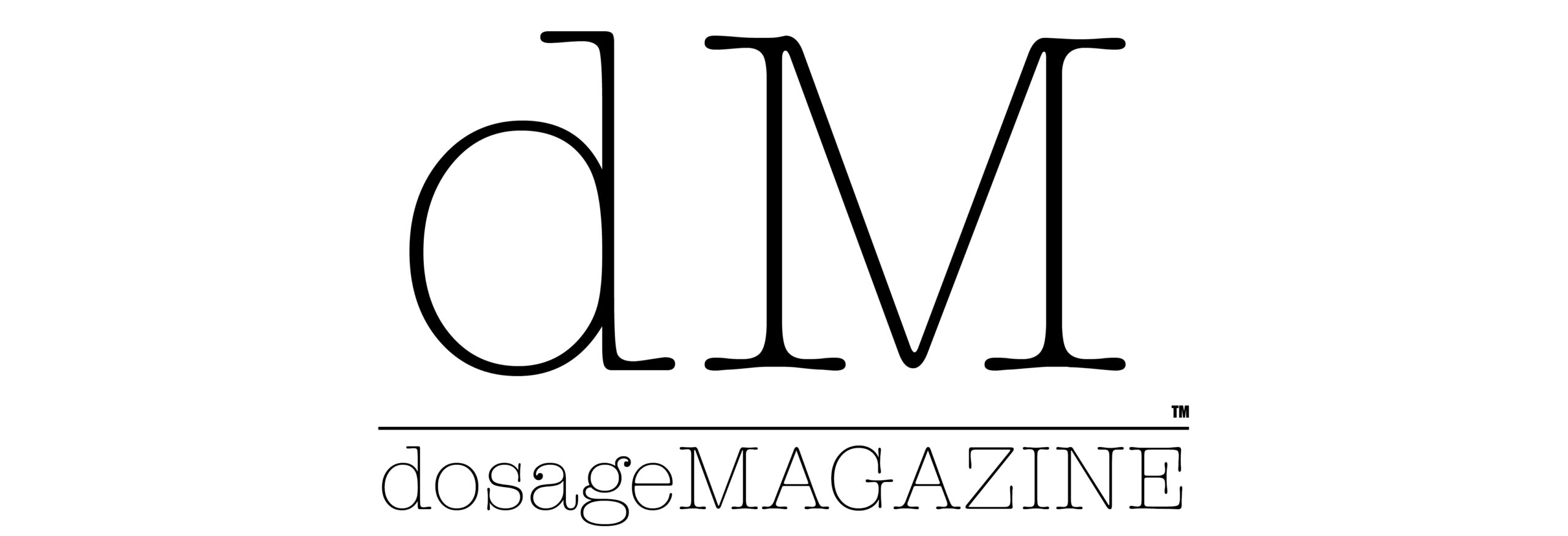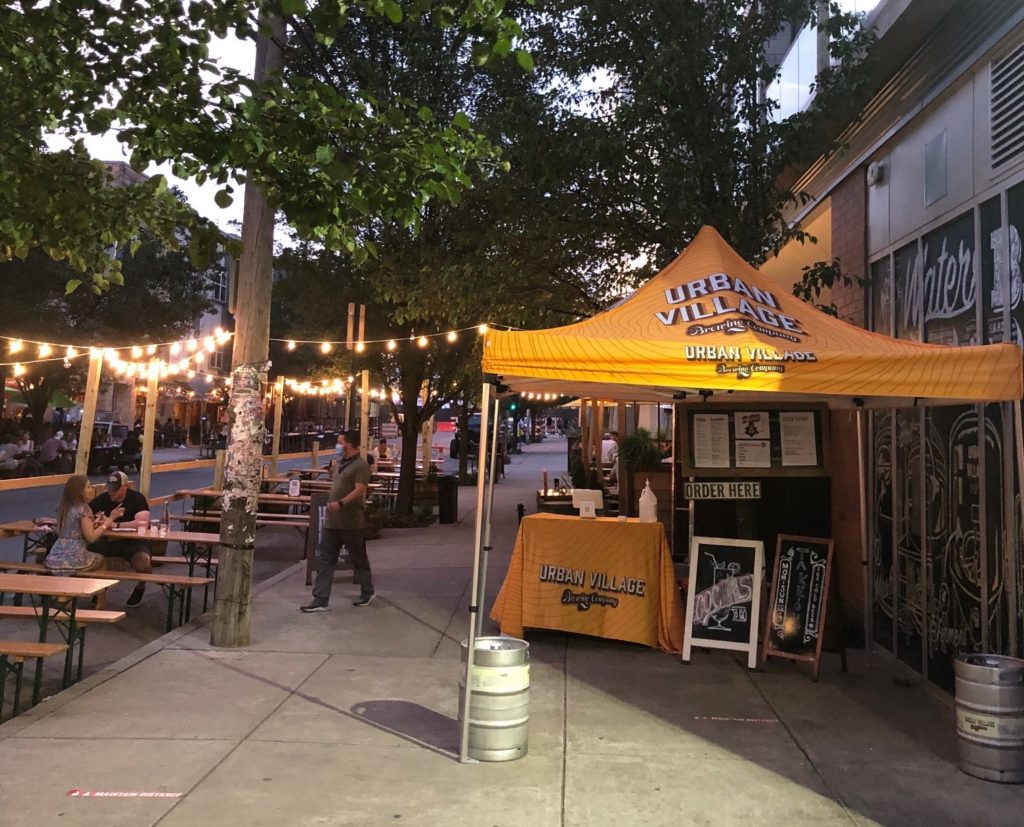You know that I know that you know – especially if you have forks at the ready in your bag and spoons in your pocket – that the City of Philadelphia outdoor dining initiative has thankfully, so far, made it that restaurants across Philadelphia can earn needed revenue by heading outside and sitting down to eat. The City’s estimate is that, since June 15, 2020, Philly has issued 735 temporary approvals for sidewalk cafes, streeteries in the curb lane, or expansions onto privately-owned parking areas and vacant lots. This is in addition to dozens of periodic street closures to further support outdoor dining. “The temporary approvals, currently in force through December 31, 2020, would remain valid through December 31, 2021 under a bill currently before City Council and supported by the Administration; extensions on to neighboring property cannot be automatically extended,” writes the City’s Press Department.
On October 15, the City offered its “Safety Standards for Outdoor Dining Through the Winter” that you can read below along with a list of weekend street closures you can read about HERE.
With that, dosage MAGAZINE and I jumped on a Zoom conference call with Dr. Thomas Farley, as well as Mike Collier (Deputy Managing Director for Transportation, Infrastructure, and Sustainability) and Sylvie Gallier Howard (Acting Commerce Director) to discuss several elements of the city’s rules.
Where balancing health and economic impact is concerned, “Lives and livelihoods are intertwined,” said Sylvie Gallier Howard, Acting Commerce Director, about making sure our economy gets back in shape while putting public health first.
There is no Flaming Lips-like bubbles or igloos like the one Germantown Garden Grill in Northern Liberties that can be considered ‘outdoors.’ Maybe, maybe not the greenhouse that Harper’s Garden in Center City is using – although, sight unseen by the city – this is an uncertainty according to Mike Carroll, Deputy Managing Director for Transportation, Infrastructure, and Sustainability.
To be counted as truly outdoors, means “no sitting in bubbles of stagnant air,” said Collier. “Outdoor dining means fresh air.” Any exchange of air, measured by flow meter? Best to contact your HVAC people.

In response to my crepe hanging question about moving so far forward and fast in regards to potentially expanding outdoor dining with the recent, daily uptick in COVID-19 cases, Dr. Farley said, “We do think that dining outdoors is a lot safer than dining indoors. To the extent that restaurants are open and people are dining in restaurants, we’re really encouraging people to dine outdoors. We are supportive of this; extending the time period of when restaurants can do this, as it gets colder. Dining outdoors, however, is not without risk. When people get together not wearing masks, there is definitely the risk of spreading from one person to another. So people need to take that into account and apply all other safety precautions.”
The City today announced initial guidelines to support restaurants in continuing to offer outdoor dining options to patrons as the weather gets cooler. The guidelines—which address shelter and heating specifications—provide businesses with as much flexibility as possible, consistent with the Philadelphia Fire Code and current COVID-19 safety measures.
Shelter
To provide shelter in the right of way, restaurants must obtain a right-of-way permit from the Department of Streets. This will facilitate access for first responders, snow and trash removal, street and utility repairs, and keeping SEPTA routes clear.
Prefabricated tents and canopies with pliable material overhead can be put up without a building permit. A building permit must be obtained before constructing a custom-built shelter with a roof and/or sides more than 48 inches high.
A tent permit and inspection are required to confirm the safety and stability of heated tents and all tents larger than 400 square feet (A.D. Amorosi note – those permits cost $103.00).
Outdoor space enclosed by three or more walls and a roof will be subject to public health requirements for indoor dining, including the 50 percent occupancy restriction (A.D. Amorosi note – to be considered outdoors, it is two walls).
Heating
Heaters powered by electricity, propane, or natural gas are authorized in outdoor dining areas only if they are manufactured for outdoor use, installed safely, and at least three (electric) or five (propane, natural gas) feet from combustible materials. New electrical connections will require an electrical permit.
The Fire Code allows heating under tents via forced air ducts. A tent permit and inspection are required.
Fire pits and other fires produced by burning solid fuels are prohibited entirely in the right of way. They cannot be used near or under tents or other shelters. Such fires may be permissible on private property only if they are in safe, approved containers at least 15 feet from any type of structure. Kerosene fires are prohibited in all outdoor dining areas.
Winterized outdoor dining spaces must continue to follow existing social distancing and public safety measures, as outlined in guidance by the Department of Public Health for restaurants and the specific guidance for outdoor dining. This includes, but is not limited to:
Spacing tables, and the backs of all chairs (when seated), a minimum of six feet apart.
Maintaining pedestrian and traffic safety, including a clear path (six feet wide) of travel for pedestrian flow.
Maintaining clear access to public utilities, fire hydrants, building entrances, crosswalks, and transit stops.
Hours of operation are limited to 8 a.m. – midnight, with last call for food and drink at 11 p.m.
No cooking or food preparation in the right of way.
Appropriate lighting is required at night.
Moveable furniture on streets and sidewalks must be labeled as property of the business and must be moved inside or secured to ground when not in use.
Establishments with fewer than 20 tables total must make at least one table ADA accessible. Establishments with more than 20 tables total must make 5 percent of tables ADA accessible.
Deliveries and waste and recycling collections must be conducted safely and in a way that does not impact social distancing, ADA regulations, or safe circulation by pedestrians, bikes, or vehicles.
Outdoor operations can be shut down if they are a nuisance to neighbors.
The City’s outdoor dining initiative has enabled hundreds of restaurants across Philadelphia to earn much-needed revenue by offering outdoor dining, including many businesses located in areas of the city that were previously prohibited from doing so. Since June 15, 2020, the City has issued 735 temporary approvals for sidewalk cafes, streeteries in the curb lane, or expansions onto privately owned parking areas and vacant lots. This is in addition to dozens of periodic street closures to further support outdoor dining. The temporary approvals, currently in force through December 31, 2020, would remain valid through December 31, 2021 under a bill currently before City Council and supported by the Administration; extensions on to neighboring property cannot be automatically extended.
About Post Author
Discover more from dosage MAGAZINE
Subscribe to get the latest posts sent to your email.

